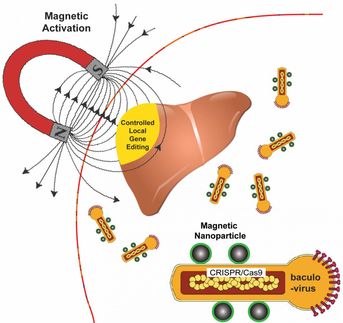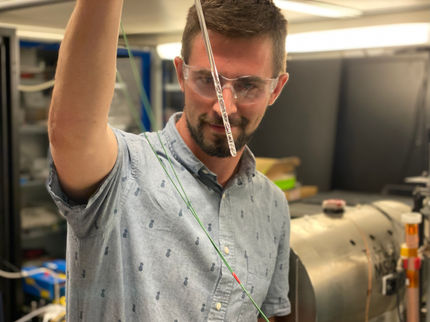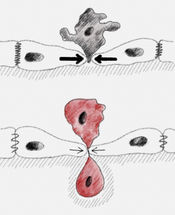Calibration tools to encourage use of novel medical imaging technique
The National Institute of Standards and Technology (NIST) has developed prototype calibration tools for an experimental medical imaging technique that offers new advantages in diagnosing and monitoring of certain cancers and possibly other medical conditions.
NIST designed, constructed and tested two prototype phantoms for calibrating ultralow-field (ULF) magnetic resonance imaging (MRI) systems. Phantoms are widely used tools for quality control in medical imaging. They are generally objects with simple shapes but very well-defined responses to a specific type of imaging scanner. As their name implies, phantoms are stand-ins for the body, and are used to help optimize MRI machines to deliver the best possible medical images for a given type of tissue.
The NIST prototypes are the first standard calibration tools for ULF-MRI, offering a quantitative means to assess performance, validate the technique, and directly compare different experimental and clinical MRI scanners.
"Tissues that may look the same in clinical MRI can look very different in ULF-MRI, which provides new contrast mechanisms," NIST physicist Michael Boss says. "Our hope is that we can move this technique along to attract more interest from [industry] vendors."
MRI noninvasively images soft tissues based on measurements of how hydrogen nuclei—in the water that makes up much of the body—respond to magnetic fields. ULF-MRI enhances tissue contrast in particular types of MRI scans. Prostate tumors, for example, can be difficult to see with conventional MRI but show up clearly under ULF-MRI. ULF-MRI has also been used experimentally to image the brain, and tested in at least one nonmedical application, inspection of liquids at airports.
ULF-MRI also offers practical advantages: The instruments are simpler in design, lighter in weight and less expensive than regular MRI scanners. That's because ULF-MRI operates at much lower magnetic field strengths, measured in microteslas, thousands of times lower than conventional MRI, which operates at up to 3 teslas and requires huge magnets. The low magnetic field strength means ULF-MRI needs the most sensitive magnetometers available: SQUIDs (superconducting quantum interference devices). This is convenient because it makes ULF-MRI suitable for combining with other SQUID-based imaging techniques such as magnetoencephalography.
NIST staff previously designed phantoms for conventional MRI systems** and also have extensive experience both making and using SQUIDs. NIST's new ULF-MRI phantoms are short plastic cylinders, shaped like hockey pucks but a bit smaller, containing six or 10 plastic jars filled with various salt solutions that become magnetized in a magnetic field. Each phantom measures a different aspect of scanner performance such as spatial resolution. NIST researchers tested the new phantoms on both a conventional MRI system at the University of Colorado Health Sciences Center (Denver, Colo.) and an experimental ULF-MRI scanner at the University of California (UC) at Berkeley, where the technique was first demonstrated about a decade ago.
Tests results show the prototype phantoms are well-matched to ULF-MRI applications and allow direct comparison of ULF and clinical MRI system performance. NIST researchers now plan to incorporate design improvements based on lessons learned from the prototypes, with the aim of improving phantom stability and providing traceability to standard measurement units. NIST and UC Berkeley researchers also plan to work together to further develop ULF-MRI technology for detection of prostate and breast cancers.
NIST's phantoms for conventional MRI systems are currently being tested by hospitals and MRI manufacturers, and Sigma-K Corp. (Durham, N.C.) is developing methods for making copies for more widespread distribution under a NIST SBIR award.























































